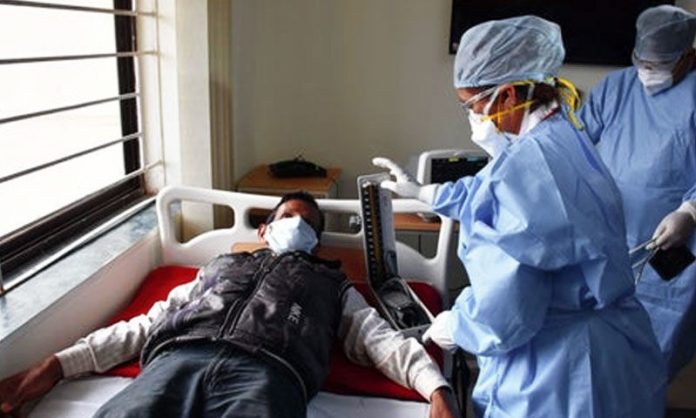This article has been written by Priyesh Srivastava, an advocate in the High Court of Delhi.
Table of Contents
Purpose of the ordinance
With the unimaginable outbreak of Covid-19 virus across the globe, doctors and health care workers have risen to occupy the position similar to that of military personnel during the times of war. During such health crisis, the medical professionals have shown their commitment to the world and have also received accolades from almost everyone (‘almost’ used intentionally!). In India, some medical professionals have faced stigmatization and ostracization, while some have also been targeted and attacked by miscreants. With no stringent law in place to tackle such incidents, the Union Cabinet in its meeting held on 22nd April, 2020 has recommended promulgation of an Ordinance to amend The Epidemic Diseases Act, 1897 (“the Act”) in order to protect healthcare service personnel and their property, including their living/working premises, against violence during epidemics. This Article progresses to discuss how the present Ordinance supplements the Act, and what legal/practical challenges lie ahead with such a law in place.

Outlook of the ordinance and its comparison with the Act
- Amendment of Section 1 of the Act- The omission of the words “except the territories, which immediately before the 1st of November, 1956, were comprised in Part B States” supplements the national reach of the Act, which was criticized earlier for having territorial boundaries.
- Insertion of Section 1A (Definitions)- The Ordinance inserts the definitions of “act of violence”, “healthcare service personnel”, “property”, and incorporates by reference, definitions from Indian Ports Act, 1908, the Aircraft Act, 1934, and the Land Ports Authority of India Act, 2010. The inclusion of the ‘Definition’ clause, which was absent in the Act, goes on to reduce the vagueness and its misuse, and also helps in determining the scope of expressions used in the Ordinance.
- Amendment of Section 2A of the Act- The Ordinance substitutes the following words –“the Central Government may take such measures, as it deems fit and prescribe regulations for the inspection of any bus or train or goods vehicle or ship or vessel or aircraft leaving or arriving at any land port or port or aerodrome, as the case may be, in the territories to which this Act extends and for such detention thereof, or of any person intending to travel therein, or arriving thereby, as maybe necessary” in place of the words starting from “the Central Government may” used in Section 2A of the Act. The inclusion of public transport services like the buses, trains, aircrafts and goods vehicle reflects the shift from the colonial idea of including only ships and vessels. It will allow the Central Government to inspect these transport services and also detect any person having symptoms of such a communicable disease in the future.
- Insertion of Section 2B (Prohibition of violence against health care service personnel and damage to property)- This is a negative clause which mandatorily restricts a person from indulging in any act of violence against a healthcare service personnel, or cause any damage or loss to any property during an epidemic. Insertion of this section supplements the object and purpose of the Ordinance, in protection of the health care personnel during the times of an epidemic.
- Amendment of Section 3 of the Act- This Amendment renumbers Section 3 of the Act, to Section 3(1), and adds sub-section (2) and (3) after that. Sub-section (2) of the Ordinance prescribes punishment of 3 months to 5 years imprisonment, along with a fine of Rs. 50,000 to Rs. 2 Lakh, if a person commits/abets violence against a healthcare service personnel or, damage or loss to any property. Sub-section (3) of the Ordinance, prescribes a punishment of 6 months to 7 years imprisonment, along with a fine of Rs. 1 Lakh to Rs. 5 Lakh, if grievous hurt is caused to a healthcare service personnel during such an act of violence. These two additional sub-sections supplement the stringent punishment of Section 3 of the Act. It goes on to protect the healthcare workers, and enables them contribute to their work and undertake their duty without any fear.
- Insertion of Section 3A (Cognizance, investigation and trial of offences)- This section categorizes the offences committed under sub-section (2) and (3) of Section 3, as introduced by the Ordinance, to be cognizable and non-bailable; to be investigated by a police officer not below the rank of an Inspector; the investigation to be completed within 30 days from the date of the registration of the First Information Report (“F.I.R.”); and the proceedings to be held as expeditiously as possible, by examining witnesses days on end, to conclude the inquiry and trial within a period of 1 year, or within an additional period of 6 months (if necessary). This section supplements the stern nature of the offences committed, by not allowing the accused to plead bail as a matter of right, and allowing the police to arrest him without a warrant. It also amplifies the principle of speedy justice.
- Insertion of Section 3B (Composition of certain offences)- This section provides for compounding of offences, with the permission of the Court, committed under sub-section (2) of Section 3, as introduced by the Ordinance.
- Insertion of Section 3C ( Presumption as to certain offences)- This section raises a presumption against the person accused, unless proved to the contrary, of committing an offence under sub-section (3) of Section 3, as introduced by the Ordinance.
- Insertion of Section 3D (Presumption of culpable mental health)- This section raises a presumption against culpable mental health of the accused, unless the contrary is proved, committing an offence under sub-section (3) of Section 3, as introduced by the Ordinance. It also highlights that a fact will be said to be proved, not by a mere preponderance of probability, but only when the court believes it to exist beyond reasonable doubt.
- Insertion of Section 3E (Compensation for acts of violence)- This section obligates the accused to pay, by way of compensation, if convicted for committing an offence under sub-section (2) or (3) of Section 3, as introduced by the Ordinance. It overrides Section 3B, by ordering the convicted person to pay twice the amount of the fair market value, in case he damages any property. In case of failure, this section also allows the amount to be recovered as an arrear of land revenue of the accused, under the Revenue Recovery Act, 1890.
Challenges Ahead
- NO DEFINITION OF ‘EPIDEMIC DISEASE’- In spite of the definition clause inserted by the Ordinance, it has failed to include the most basic definition, i.e., the definition of an ‘epidemic disease’. In the present scenario, the lockdown was announced by the Hon’ble Prime Minister in pursuance of an order by the Ministry of Home Affairs which categorized the outbreak of the epidemic, only after the World Health Organization declared the virus as a pandemic. Without any definition in place, it is difficult to categorize any virus as an ‘epidemic disease’. The Merriam Webster Dictionary defines ‘epidemic’ as “affecting or tending to affect a disproportionately large number of individuals within a population, community, or region at the same time.” Therefore, it would have been better to adapt a definition already in place, rather than not defining it at all.
- THE SCOPE OF ‘DANGEROUS’- Section 2 and 2A of the Act empowers the State and the Central Government to pass necessary regulations, only when they are satisfied that any place is threatened within an outbreak of any dangerous epidemic disease. Even if the Government defines as to what constitutes an ‘epidemic disease’, it is still uncertain to categorize it as ‘dangerous’; whether it depends upon the magnitude of the problem, the severity of the problem, the age of the population affected or its potential to spread internationally, remains unclear.
- NO SCOPE OF REGULATIONS- The regulations passed by States and the Central Government has been criticized by many as being oppressive and over-arching. The Uttar Pradesh Government’s regulation imposing a mandatory obligation on the employers to pay full wages to the employees during lockdown, seems a bit of stretch, as the non-fulfillment of such an obligation constitutes a criminal offence and holds that person liable under Section 3(1) of the Act.
- PRIVACY ISSUES WITH INSPECTIONS- After the Supreme Court’s landmark judgment in the case of Justice K.S. Puttaswamy (Retd.) and Anr. vs Union of India, where the right to privacy has been categorized as a fundamental right, the power of inspection by the Government has been put to test. With the Center’s latest collection of personal data by the Arogya Setu application, or the tracing of aircraft and railway reservation data to track suspects, or with Kerala Government’s usage of telephonic call records, CCTV footage and mobile phone GPS; it all has raised concerns over the possible breach of personal data, unless the Government assures to follow due process of law by formulating guidelines to the extent of information to be collected and subsequently disclosed.
- LACK OF HUMAN RIGHTS- The Ordinance highlights the powers of the Government, without specifying the rights of the people. It is silent on the ethical and human right principles of the people during such an epidemic. The action of stamping people on the hand, to make sure they don’t escape quarantine facilities, has resulted in a lot of debate and stigmatization, which has become a primary reason why many people are choosing to hide their symptoms, rather than getting tested. This action of the Government has led to fall in trust and confidence of the people, in general.
- NO PROVISION FOR COGNIZANCE- Section 3(1) of the Act, as amended now by the Ordinance, is a deeming provision and deems that a person has committed an offence under Section 188 of the Indian Penal Code, 1860. Section 188 is read with Section 195 of the Code of Criminal Procedure, 1973, which allows the Magistrate to take cognizance only on a complaint in writing filed by the Public Servant. Now the Ordinance, by way of Section 3A only talks about cognizance of offences committed under sub-section (2) and (3), while being silent on the offence committed under (1). This will result into filing of numerous FIRs, as being done already, and goes on to create a conflict between the provisions of the Act and the procedure established by the Code of Criminal Procedure, 1973.
- MISUSE OF PROTECTION AND WRONG IMPLEMENTATION– Though the police personnel have been commendable at the forefront to implement the lockdown and various other government regulations, there have been incidents where the police personnel have misused their position ranging from beating up people with a stick without any just cause, registration of unnecessary FIRs, to allowing a few privileged people to disobey the lockdown, and many more. Moreover, Section 4 of the Act gives the police personnel protection from any suit or criminal proceedings by anything done by them under the Act. This protection along with wrong implementation of the guidelines has resulted into unbridled display of power by the police personnel, which has not only defeated the purpose of the Act, but has also caused great misery to some during such harsh times of epidemic.
Conclusion
The Ordinance does justice to the object with which it is promulgated, however it leaves behind many lacunae to fill, which hopefully should be rectified when it is placed before the Parliament as per the provisions of Article 123(2) of the Constitution. It will be interesting to observe as to how the Parliament will bring about a balance between the powers of the Government and the rights of the citizens, so that the implementation of the Act is appropriate in cases of such an epidemic outbreak in the future.
Disclaimer– Views are personal and for informational purposes only. Kindly mail at [email protected] for any clarifications.
LawSikho has created a telegram group for exchanging legal knowledge, referrals and various opportunities. You can click on this link and join:
https://t.me/joinchat/J_0YrBa4IBSHdpuTfQO_sA
Follow us on Instagram and subscribe to our YouTube channel for more amazing legal content.
 Serato DJ Crack 2025Serato DJ PRO Crack
Serato DJ Crack 2025Serato DJ PRO Crack










 Allow notifications
Allow notifications




Great light thrown on a very important topic. It is the need of the hour to make people aware about it around the nation. Thankyou for writing this article, great work!
Well written.